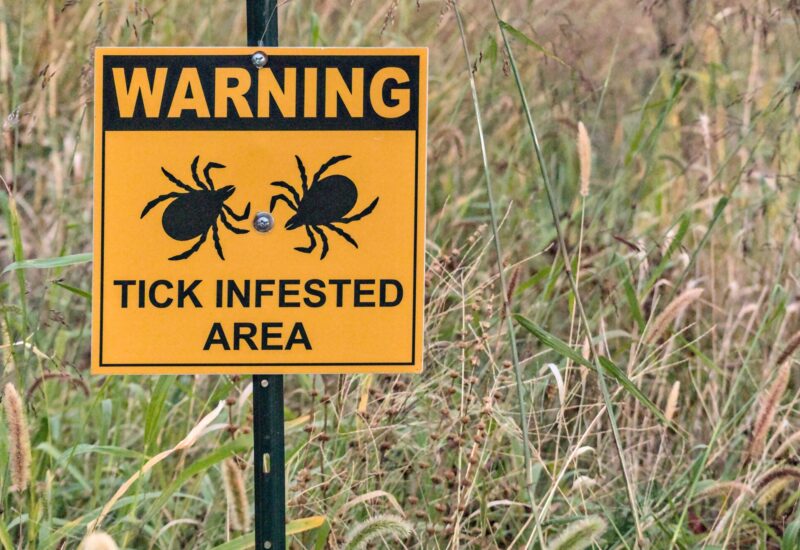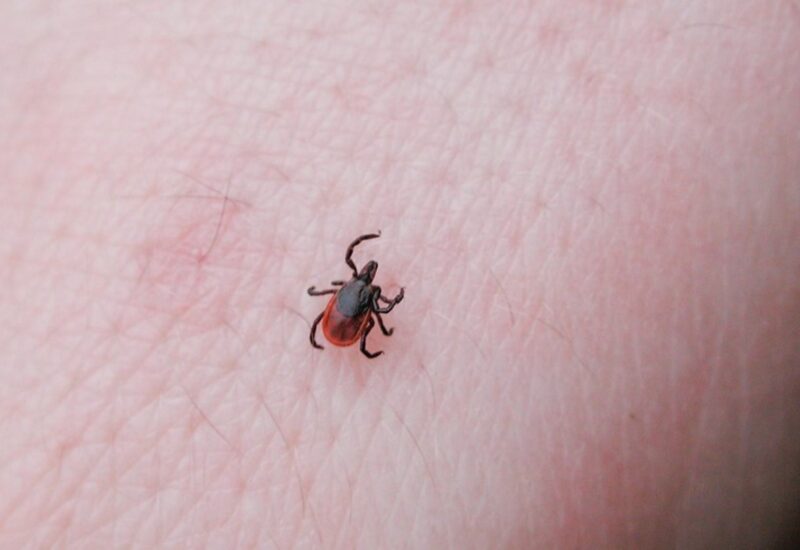Tick Diseases in Humans & Pets

Tick-Borne Diseases Like Lyme Disease are on the Rise Throughout Most of the United States.
The warm weather has finally arrived in the Northeast United States and throughout the country, and tick populations have once again grown to an all-time high.
A new species of tick has been discovered — and in abundance — in New Jersey with origins from East Asia, and with it comes the threat of new diseases. And the scary fact that it’s likely only a matter of time before this new tick makes its way throughout other Northeastern states.
So far, what we know about tick diseases is scary, but being educated about how to avoid ticks and the diseases that they spread can also help keep humans and our pets safe.

Ticks Diseases
Ticks, which are arachnids most closely related to spiders, are parasites. There are over 850 known species of ticks, with about 90 species found within the US.
Ticks are known to carry diseases that can be life-threatening to humans. However, every tick is not infected with disease, and not every species of tick actually carry and transmit disease.
Ticks are predominantly found living in high grasses, where they are picked up by animals or humans that pass by. They don’t jump, but rather crawl onto their hosts.
Feeding only on blood, ticks take on disease from an infected host’s blood. Ticks can become infected at any stage of life (besides as egg), and will continually spread traces of disease to each host that they feed from until the tick’s death.
When a tick bites, it releases salvia into the small wound that it has created as it feeds on your blood. The tick’s saliva contains the pathogens of whatever disease it has been infected with. Usually the bacterial strains that cause disease take multiple days to enter a human’s body. However, ticks have plenty of time on their hands. If left undetected, ticks can feed on a host for three or more days. Yikes!
Lyme Disease
Lyme disease is the most common tick-borne illness. Lyme disease has been said to have been around for ages, but it wasn’t until the 1960s and 70s that the disease began to effect significant numbers of people.
After the 70s, a much more in-depth study was conducted and the bacterial strain that causes the disease, Borrelia burgdorferi, was discovered by Dr. Willy Burgdorfer in early 1980s.
Lyme disease, a multi-system inflammatory disease, is transmitted by the blacklegged (deer) tick throughout most of the United States, except for the Pacific Coast, where the western blacklegged tick is known to be the infector.
Though these ticks can spread the disease any stage between nymph and adult, humans are more likely to have the disease transferred to them via a tick in the nymph stage.
In this stage of life, the tick is smaller and less likely to be found immediately. This provides the tick with enough time to feed and successfully transfer the bacterial strain into the humans body (since this usually occurs within a 36 to 48 hour window after the initial bite).
The first symptom of Lyme disease is usually a rash, red in color, and typically has the appearance of a bull’s eye. It is known to appear 1 to 2 weeks after the initial bite.
Other common symptoms of Lyme occurring around the same time as the rash are fever, pain in joints, and chills and fatigue. As the disease continues to spread throughout the body, the intensity of joint pain and fatigue increase, and numbness and partial paralysis may occur.
Early detection of Lyme makes it most often curable, however, if left untreated, the disease can become debilitating.
If you experience any of these symptoms following time spent outdoors or after being bit by a tick, it is important to seek immediate attention.
Other Tick-Borne Diseases
Anaplasmosis
Transmitted by the blacklegged and western blacklegged ticks, anaplasmosis is a disease affecting humans by causing fevers, muscle aches and headaches, as well as chills.
Babesiosis:
Also transmitted by the blacklegged deer tick, babesiosis occurs as a result of red blood cells being infiltrated by parasites, which cause heavy flu-like symptoms as well as nausea and fatigue.
Bourbon Virus:
Although less common, cases of the bourbon virus have been recently found in the Midwest and Southern United States. It is not known exactly which species of tick is responsible for the spread of the disease,but the disease is known to be potentially life-threatening. Common symptoms included fever, rash, fatigue, and head and body aches, as well as nausea and vomiting.
Colorado Tick Fever (CTF):
Transmitted through the bite of the Rocky Mountain wood tick, the Colorado tick fever is a rare virus mostly occurring in in the western United States and Canada. Symptoms of CTF are fever, fatigue, chills, and head and body aches.
Heartland Virus:
Known to be transferred by the Lone Star tick, the Heartland virus causes fatigue, nausea, lack of appetite, headache, diarrhea and muscle and joint pain. It is found to occur most throughout the Midwestern and Southern United States.
Powassan Virus (POW):
Powassan Virus, mostly found in the Northeast and Great Lakes Region, is one of the most vicious of the currently discovered tick-borne diseases.Though not very common, it is deadly. Symptoms are similar to those of other tick-borne diseases as well as weakness, seizures, loss of coordination, speech impairment. Swelling of the brain and membranes are the brain and spinal cord can also result from being infected with the virus.
Rocky Mountain Spotted Fever (RMSF):
Rocky Mountain spotted fever is a part of the spotted fevers that occur from the bacterial strain Rickettsia. This virus is most commonly known for the specific rash that accompanies the disease that takes on the appearance of spots or large red patches. However, due to the rash’s late development, it can be difficult to diagnose early on. It can be transmitted through the American dog tick, Rocky Mountain wood tick, and the brown dog tick, and is usually found in the Southern United States. Symptoms are closely related to that of other tick borne diseases.
Southern Tick Associated Rash Illness:
Commonly mistaken for Lyme disease because of a similar rash, this disease is caused by the bite of the Lone Star Tick. It occurs throughout the southern United States, and throughout the East Coast.
To avoid ticks and diseases that ticks transmit, it’s important to wear repellent when going outdoors. Make sure that when you check for ticks each time you spend time outdoors.
Ticks often hide in areas that are harder to detect (under arms, in hair or groin area), so make sure to inspect thoroughly before showering or going to bed. If a tick is found make sure to remove and dispose of it properly.






